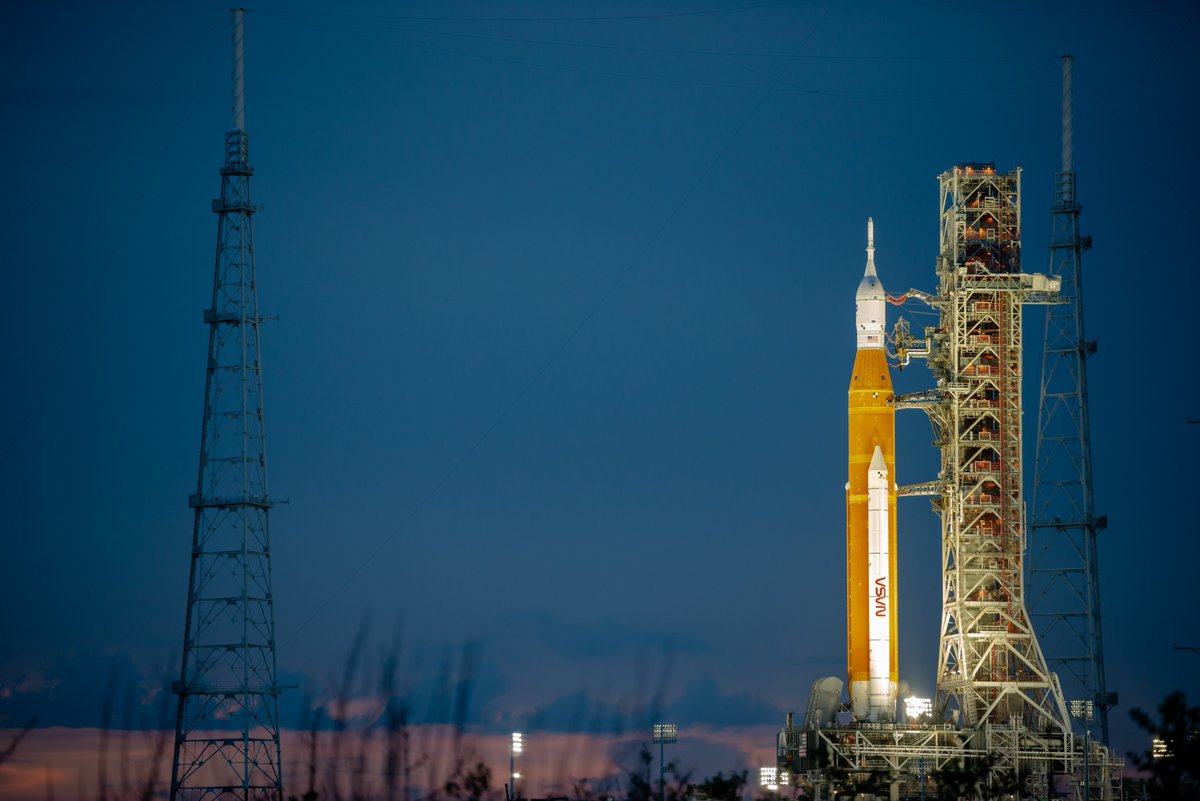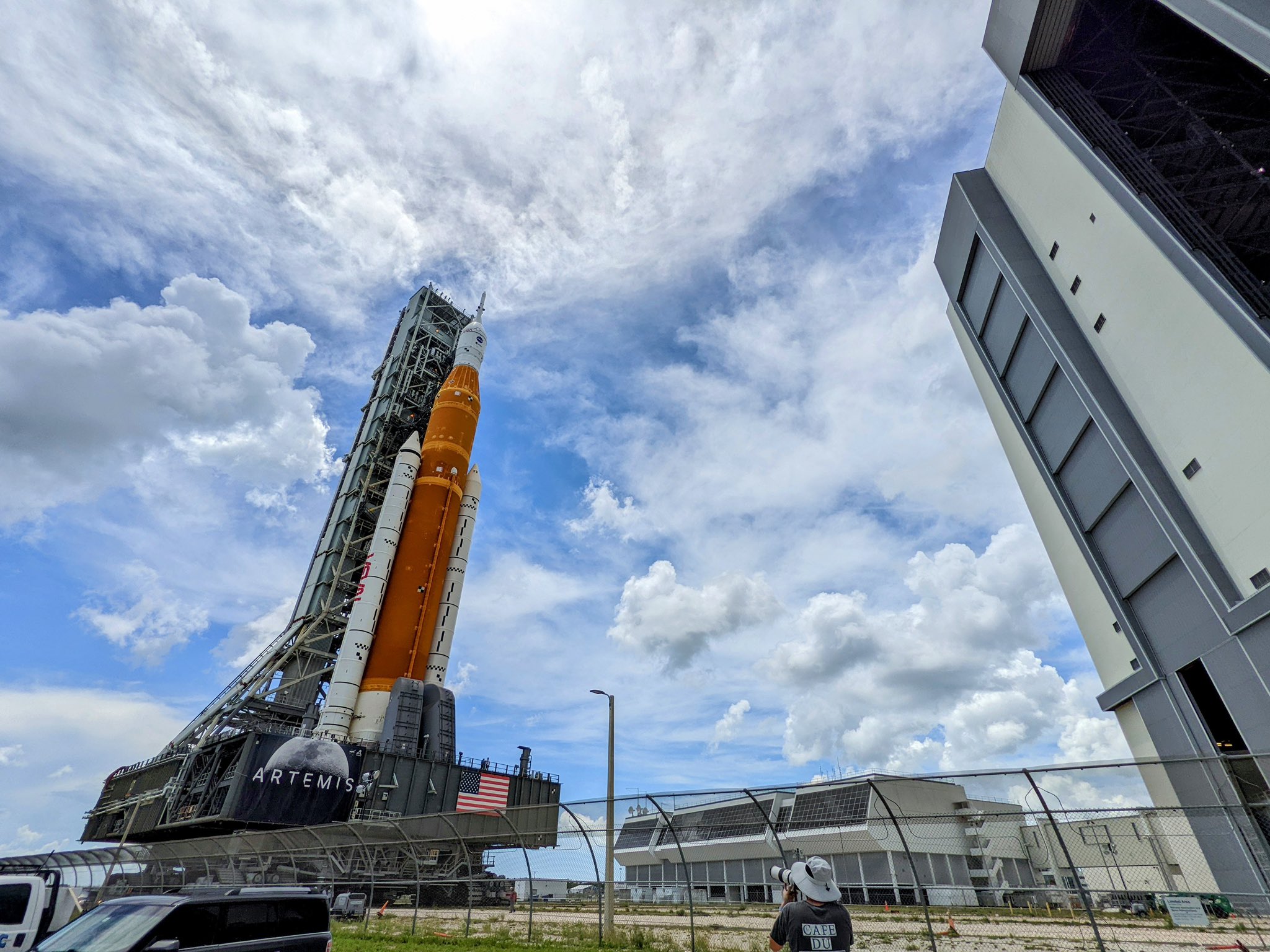
NASA's Artemis 1 moon rocket is no longer on the launch pad.
The Artemis 1 stack — a Space Launch System (SLS) rocket topped by an Orion crew capsule — departed Pad 39B at NASA's Kennedy Space Center (KSC) in Florida at 4:12 a.m. EDT (0812 GMT) on Saturday (July 2).
The duo made it to KSC's cavernous Vehicle Assembly Building (VAB) by around 2:30 p.m. EDT (1830 GMT), completing the 4-mile (6.4 kilometers) trek atop NASA's enormous crawler-transporter 2 vehicle in a little over 10 hours, agency officials said in a blog post.
Related: NASA's Artemis 1 moon mission explained in photos

Artemis 1 recently wrapped up its "wet dress rehearsal," a crucial series of tests and simulations designed to help determine a vehicle's readiness for flight. This wet-dress success was hard-won; the Artemis 1 team first tried to notch the milestone in early April but were thwarted by several technical issues, including a stuck valve. Team members ended up rolling the stack back to the VAB for repairs on April 25, then sent it to the pad for another attempt earlier this month.
The latest try did not go perfectly smoothly — a hydrogen leak was discovered during fueling operations — but NASA officials deemed it good enough to start preparing Artemis 1 for liftoff.
Artemis 1 will send an uncrewed Orion on a roughly month-long journey around the moon. The mission team is apparently eyeing late August or early September for the liftoff, but an official target date won't be set until SLS and Orion have been inspected fully back at the VAB.
Get the Space.com Newsletter
Breaking space news, the latest updates on rocket launches, skywatching events and more!
As its name suggests, Artemis 1 is the first mission of NASA's Artemis program, which aims to establish a sustainable human presence on and around the moon by the end of the 2020s. If all goes well with Artemis 1, Artemis 2 will send a crewed Orion around the moon in 2024, and Artemis 3 will put astronauts down near the lunar south pole about two years later.
Editor's note: This story was updated at 2:15 p.m. EDT on June 30 with the new estimated rollback start time of 8 p.m. EDT. NASA moved the rollback ahead by four hours due to expected bad weather overnight. The story was updated again at 7:20 p.m. EDT on June 30 with the most recent estimated rollback time of 6 p.m. EDT on July 1. The latter change was due to "a concern with the condition of the crawlerway that leads from Launch Pad 39B to the VAB," NASA officials said via Twitter. This story was updated a third time at 11:15 a.m. EDT on July 1 with the new estimated rollback start time of 11 p.m. EDT. NASA moved the rollback later due to weather, according to NASA officials. The story was updated a final time at 4:55 p.m. EDT on July 2 with news that Artemis 1 had reached the VAB.
Mike Wall is the author of "Out There" (Grand Central Publishing, 2018; illustrated by Karl Tate), a book about the search for alien life. Follow him on Twitter @michaeldwall. Follow us on Twitter @Spacedotcom or on Facebook.
Join our Space Forums to keep talking space on the latest missions, night sky and more! And if you have a news tip, correction or comment, let us know at: community@space.com.

Michael Wall is a Senior Space Writer with Space.com and joined the team in 2010. He primarily covers exoplanets, spaceflight and military space, but has been known to dabble in the space art beat. His book about the search for alien life, "Out There," was published on Nov. 13, 2018. Before becoming a science writer, Michael worked as a herpetologist and wildlife biologist. He has a Ph.D. in evolutionary biology from the University of Sydney, Australia, a bachelor's degree from the University of Arizona, and a graduate certificate in science writing from the University of California, Santa Cruz. To find out what his latest project is, you can follow Michael on Twitter.









